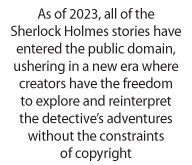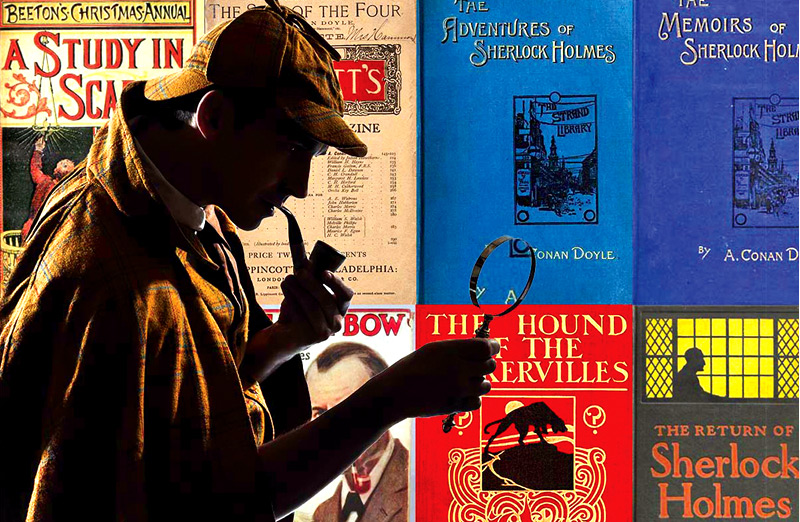As of 2024, the first animated short to introduce the iconic Mickey Mouse, Steamboat Willie, has entered the public domain, and the internet has not spared a minute in celebrating that fact.
 But beyond just Mickey, there are many cultural icons that have already entered the public domain, to the benefit of creators and consumers alike, such as the great detective, Sherlock Holmes. Created by Sir Arthur Conan Doyle, Sherlock Holmes, is inarguably one of the most enduring and beloved characters in literature, with literally thousands of adaptations of the character in film, tv, books, stage plays and much much more.
But beyond just Mickey, there are many cultural icons that have already entered the public domain, to the benefit of creators and consumers alike, such as the great detective, Sherlock Holmes. Created by Sir Arthur Conan Doyle, Sherlock Holmes, is inarguably one of the most enduring and beloved characters in literature, with literally thousands of adaptations of the character in film, tv, books, stage plays and much much more.
Cultural phenomenon
Beyond just literature, Sherlock Holmes as a character has become a cultural phenomenon, influencing various mediums and shaping the detective genre itself. Though Holmes is far from the first fictional detective, with him being directly influenced by Edgar Allan Poe’s C. Auguste Dupin, Sir Arthur Conan Doyle’s creation has left an indelible mark on detective fiction, inspiring countless authors, filmmakers, and television producers.
Classic adaptations such as Basil Rathbone’s portrayal of Holmes in the 1940s films are cherished by fans. More recent interpretations, including Robert Downey Jr.’s unique portrayal in the film series directed by Guy Ritchie and Benedict Cumberbatch’s modern-day incarnation in the BBC series “Sherlock,” have brought Holmes to new generations of audiences.
Though it has been well over century since the first appearance of Sherlock Holmes in 1887, the legality of using the character has been in contention for a while. In accordance to U.S copyright law, works published before 1923 are in the public domain which means the earliest Sherlock Holmes stories, such as the first, “A Study in Scarlet”, and first collection, “The Adventures of Sherlock Holmes,” fall into this category. Works published after 1923, such as the final ten short stories penned by Doyle, would be protected for 95 years.
New era
But while the earlier works were fair game, the Conan Doyle Estate have argued that certain aspects of the character that appear prior to 1923, which were later developed in the final ten stories, would still be protected under copyright law.
This permitted the Estate to restrain specific depictions of Sherlock Holmes. This only applies to the US, as the entirety of the Sherlock Holmes canon has been in the public domain since 2000. As of 2023, all of the Sherlock Holmes stories have entered the public domain, ushering in a new era where creators have the freedom to explore and reinterpret the detective’s adventures without the constraints of copyright.

The liberation of Sherlock Holmes into the public domain signifies more than a legal development; it represents a celebration of creative freedom. With the character and early stories now open for exploration, creators can experiment with narratives, character dynamics, and settings in ways that were previously restricted by copyright limitations.
It has sparked a creative renaissance, with writers, filmmakers, and artists eager to put their own spin on the legendary detective. The absence of copyright constraints has led to a proliferation of new stories, adaptations, and reimaginings that breathe fresh life into the iconic character.
This is especially important to fans of the character. As one of the oldest long running franchises in fiction, the series has collectively amassed an huge fandom across a variety of adaptations, all excited by the prospect of new interpretations of the beloved detective.









